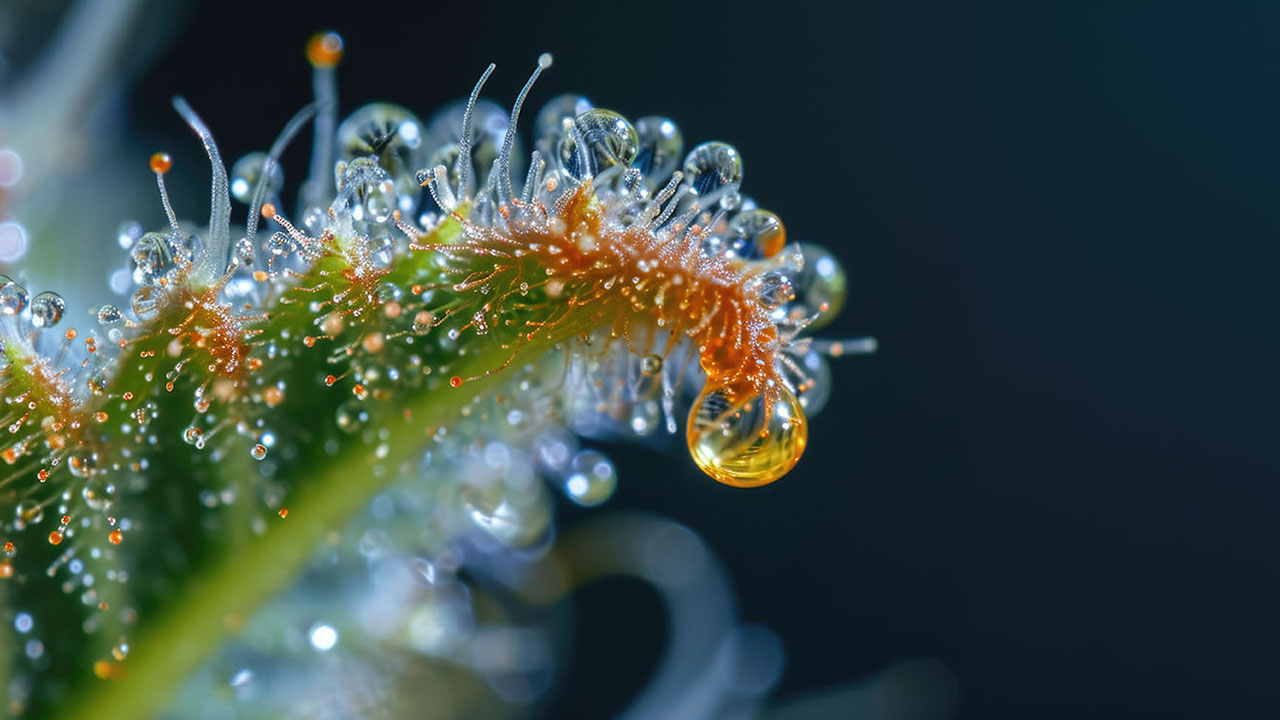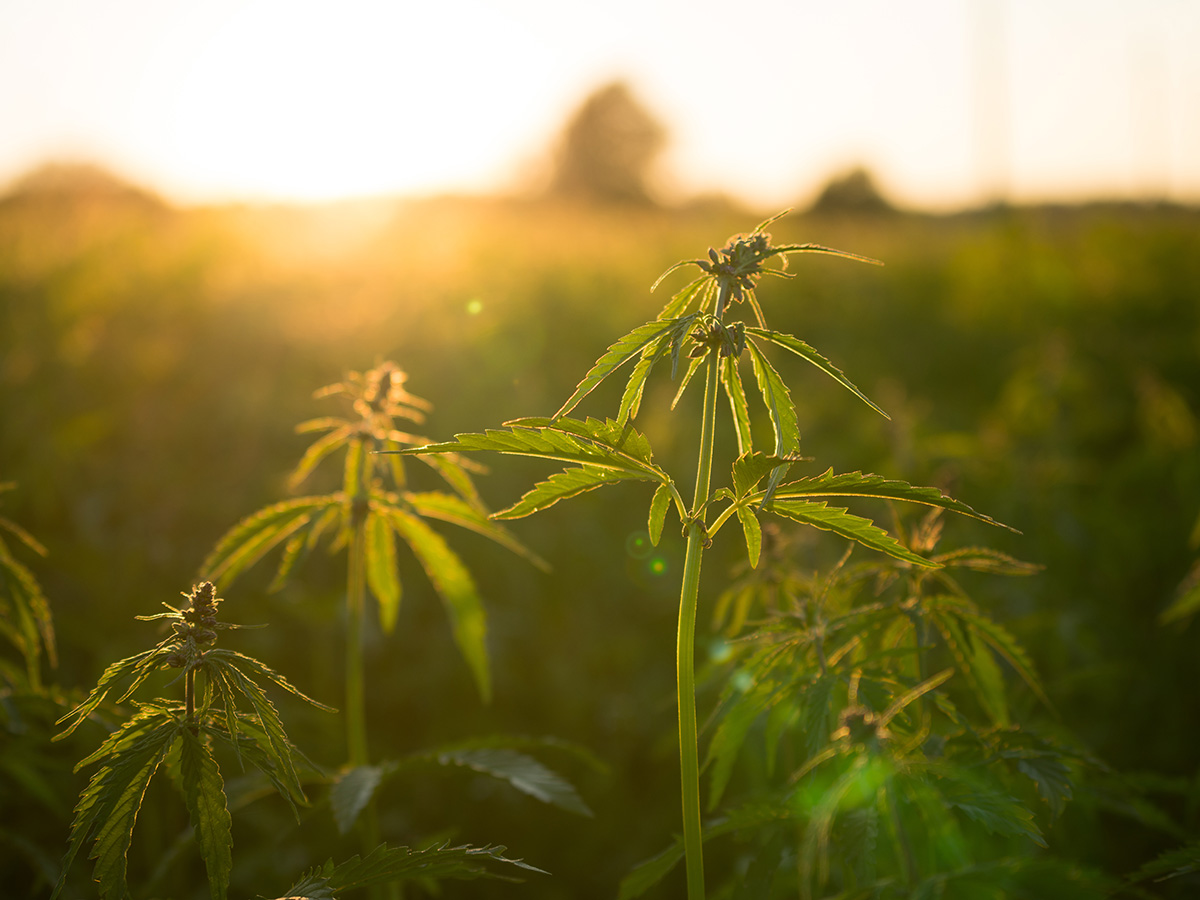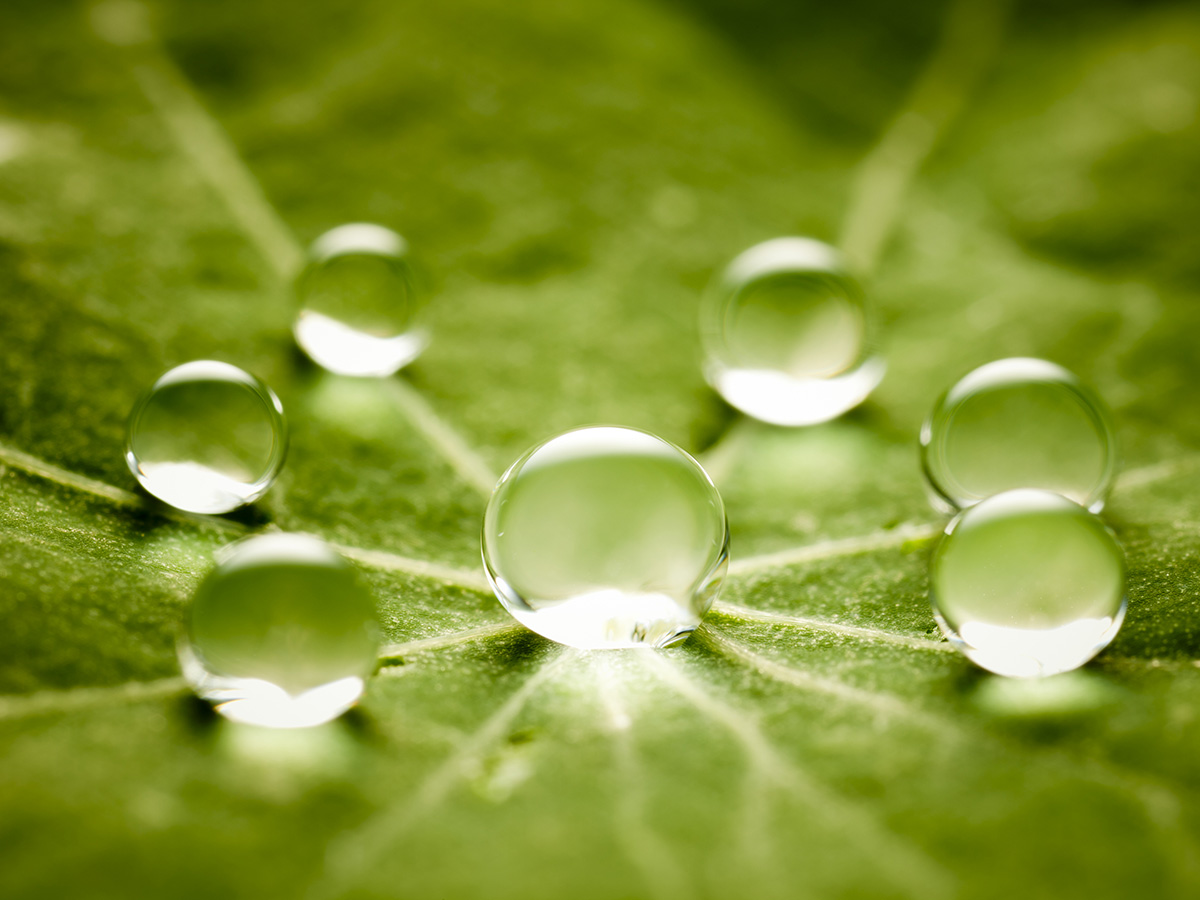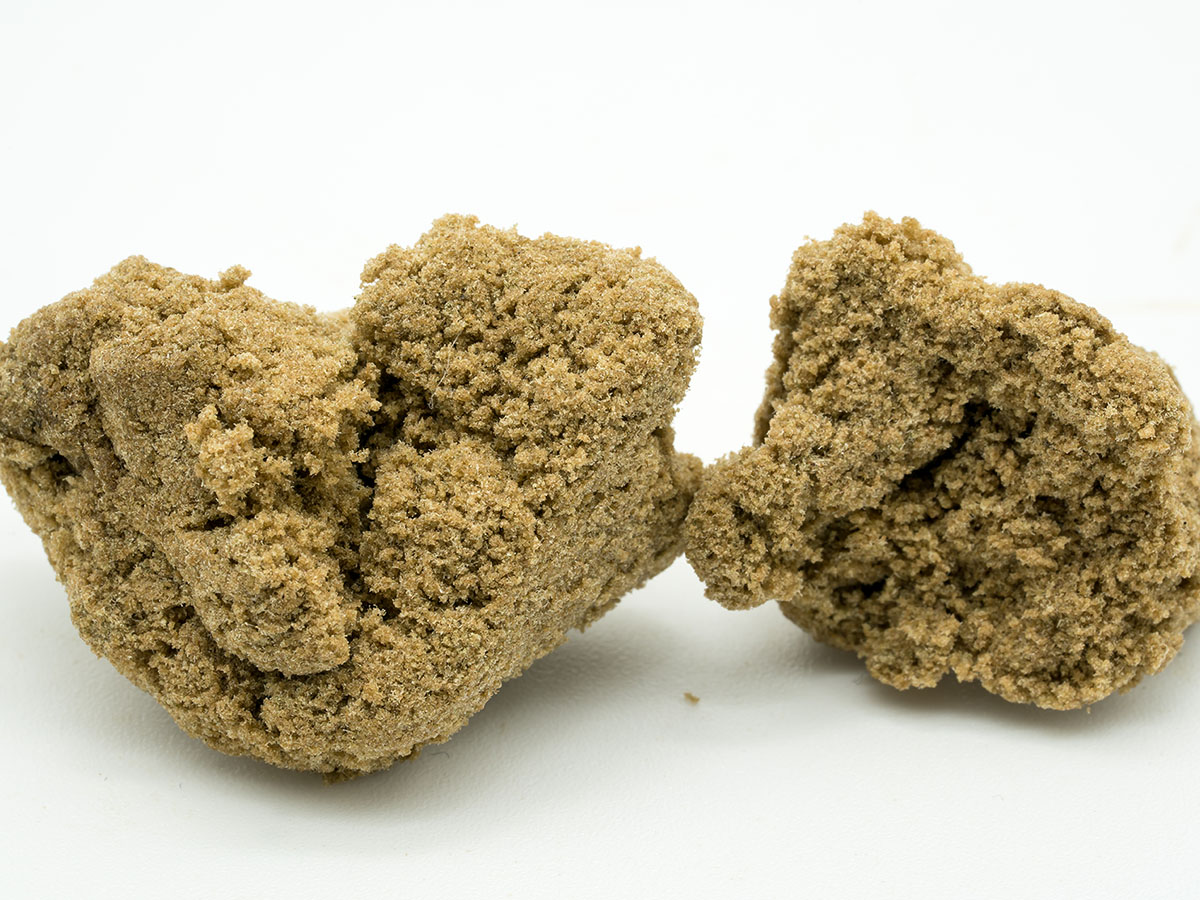
Trichomes Explained: What Are They & How Do They Work?
May 19, 2024
If you’ve ever looked closely at your favorite plants or flowers, you’ve probably noticed that they’re often covered in tiny, hair-like structures. These are called trichomes, and they’re what give plants their distinctive smell–including cannabis!
Cannabis trichomes produce the complex chemical compounds that we all know and love, including THC and CBD.1 Read on to learn more about how these botanical powerhouses work.
What are Cannabis Trichomes?
Cannabis trichomes are glandular structures on cannabis flowers and leaves. Their name comes from a Greek word, "trichoma," which means growth of hair.2 The trichomes on marijuana flower make a frosty-looking resin coating that contains cannabinoids and terpenes.3 It's difficult to see details on even the largest type of cannabis trichome without a magnifying glass. Trichomes start growing as small spheres and get longer as the plant matures. The more the trichomes grow, the more the secreted resin starts to look milky white, eventually turning to amber.3
What Do Trichomes Do?
Trichomes have a big impact on the cannabis plant, as well as on humans that ingest it. Plant researchers have identified several ways that trichomes protect cannabis plants.
- Cannabinoids: Trichomes secrete cannabinoids, including THC and CBD, as well as hundreds of additional compounds like CBN and CBG. Some cannabinoids made and stored in cannabis trichomes can protect the plant from UV radiation, including potential damage to the plant's reproductive organs.
- Terpenes: Trichomes also produce terpenes and other flavonoids which are responsible for marijuana’s taste and smell.2 Terpenes may protect the plant against insect damage or harmful bacteria. They can even discourage animals from nibbling at the plant.1
Different Types of Cannabis Trichomes
The actual appearance of trichomes depends on the type of trichome. Some are like bulbous beets while others are more flower-shaped with a stalk and head. If you’re looking at a marijuana plant with your naked eye, the latter is the only one you’ll have a chance to see. This is likely why some people describe trichomes as hair-like (“trichome” is actually the Greek word for “hair”).
You’ll likely be able to see trichomes with your own eyes because they form a glossy, sticky, clear-to-white layer around the cannabis flower buds.
Why are Cannabis Trichomes Important?
Trichomes are present over the entire cannabis plant, although the trichomes with the greatest concentration of bioactive and psychoactive cannabinoids comes from the cannabis plant’s flower. There are three types of glandular cannabis trichomes that researchers have identified so far.1 Each of these types of trichomes plays a different role in cannabis plant development.
Bulbous Trichomes
Capitate-sessile trichomes are the next-largest size. They have a bulbous head on a short stalk, and they are found on cannabis stems and the underside of leaves.3 Like bulbous trichomes, the capitate-sessile trichomes are usually too small to see with the naked eye. This mid-sized trichome doesn't make many cannabinoids.1 Researchers have discovered that many of the capitate-sessile trichomes become capitate-stalked trichomes as the plant matures.3
Capitate-Sessile Trichomes
When cannabis growers talk about desirable or beautiful trichomes on cannabis flower, they are referring to capitate-stalked trichomes. Visible to the naked eye, these trichomes have long stalks and bulbous heads that can sometimes look like mushrooms. They contain the cannabinoids, terpenes, and other potentially beneficial compounds produced by the marijuana plant. As capitate-stalked trichomes grow, they secrete frosty or milky resin that can darken as the plant matures.1
Capitate-Stalked Trichomes:
If you can see trichomes on your flower, you’re likely looking at this one. Ten times the size of bulbous trichomes (100 micrometers), the capitate-stalked trichomes are the biggest type of trichome. They have a long stalk and big, globe-like heads, and they serve as ground zero for the creation of cannabinoids and terpenes.
Trichomes & Harvestation
Trichomes grow and change as the cannabis plant grows and changes. They provide some of the most important signals growers have to choose when to harvest and process marijuana flower and other parts of the plant.
After cannabis plants have grown for a few weeks, the flowering stage begins and trichomes start growing on the cannabis flowers. The trichomes grow and secrete resin containing cannabinoids, including THC and CBD.2
Growers will harvest the plant at different stages, depending on their goals for the ultimate product. When the plants are ready for harvest, the resin in trichomes becomes milky white which indicates when they contain the highest percentage of THC. As the milky tone becomes darker, THC percentage tends to decline. The sweet spot is when the majority of trichomes are milky white, and this is when most growers choose to harvest.3
Frequently Asked Questions
Trichomes are a hot topic in the cannabis cultivation world. Here are some of the most common we hear at our dispensaries.
Do more trichomes mean better cannabis?
Usually, yes. "Trichomes are the biochemical factories of the cannabis plant," according to botanists from the University of British Columbia.4 More trichomes contain more cannabinoids and terpenes, which can mean better cannabis experiences.
How can I collect trichomes?
You can collect trichomes from cannabis flower by using a kief catcher, an additional screen added to cannabis grinders. This process requires a four- or five-screen grinder.
Are trichomes the same as hash or kief?
No, trichomes aren't the same as hash or kief, they're the starting point for these concentrates. When trichomes are extracted from the plant and collected in a kief catcher, the resulting golden powder is kief. Hash is similar to kief, but it's processed further into small, concentrated brown blocks or cones.5
More About Cannabis Trichomes
When you stop to look at the trichomes on cannabis plants, or any other plants or flowers you enjoy, you can catch a glimpse of the beautiful complexities found in nature. If you have more questions about how trichomes contribute to the overall cannabis experience, feel free to chat with a budtender at one of our dispensaries.
Sources:
1."Cannabis Glandular Trichomes: A Cellular Metabolite Factory," Frontiers in Plant Science, September 20, 2021, https://www.ncbi.nlm.nih.gov/pmc/articles/PMC8488169/
2."Trichomes: What Are They Used For?" WayofLeaf.com, March 3, 2020, https://wayofleaf.com/education/what-are-trichomes-cannabis-terminology-101
3."What are trichomes?" Weedmaps.com, https://weedmaps.com/learn/dictionary/trichome
4."The frostier the flower, the more potent the cannabis," ScienceDaily, October 28, 2019, www.sciencedaily.com/releases/2019/10/191028092408.htm
5."What are trichomes and why do they exist on cannabis?" Leafly.com, March 7, 2024, https://www.leafly.com/news/science-tech/what-are-trichomes-on-cannabis
Recreational cannabis is not available in all states. Cannabis is for medical use only and may only be used by certified patients in Ohio and Pennsylvania. State laws impact what dispensaries can and can’t sell to recreational customers and certified patients. Not every type of product, consumption method, dosage form, or potency mentioned on this blog will be permitted in all locations.


